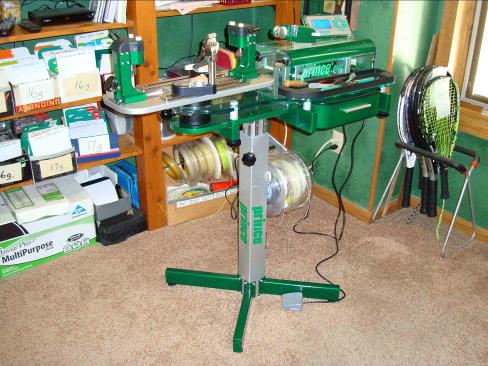




|
Process and Equipment |
|
Record Keeping We maintain electronic records of every racquet we string. We have been maintaining digital records for over 25 years. Since string tension and string selection can have just as much impact on playability as a new frame, it is a good idea to experiment with different strings and tensions. Having your complete stringing history will help you determine the best strings and tension for you.
Stringing Process The stringer, the stringing machine, and the string are all significant variables in the stringing process. If you take your racquet to a different store, you can expect the feel to be a little different even though you requested the same tension and the same string. We control as many variables as possible to provide you with the same, consistent result every time we string your racket. Our turnaround time for racket stringing is normally a couple of days. For those situations where you need to get the racket back within 24-hours, we charge and extra $3 rush stringing fee.
Stringing Machines The purpose of the machine is to provide consistent tension for each string and for every racket. The tensioning mechanism, the string clamping system and the frame mounting all play a role in obtaining a consistent tension.
There are lots of different tensioning mechanisms but all of them are one of two types - constant pull or lock-out. Constant pull means the machine keeps pulling at the tension the machine is set to until the stringer releases tension. Lock-out means that the machine stops pulling as soon as it reaches the desired tension and locks the string at that position. Most professional model machines are constant pull mechanisms. The advantage of constant pull is that they will pull through friction points and they will pull more of the stretch out of very stretchy string, resulting in a more consistent and slightly tighter string bed than what is produced with a lock-out machine. Many lock-out machines feature a spring loaded, crank tensioning mechanism as is found on the popular Prince Neos. Since springs fatigue over time, these machines need to calibrated on a regular basis.
The clamps on a stringing machine hold the strings in place after tension is applied to the string. Good quality clamps will hold the strings without allowing the string to slip without crushing the string. Once clamped on a string, the clamp must also not move from its locked position on the machine. A very small amount of clamp slippage results is a significantly lower tension. Most modern clamping systems allow the clamps to rotate 360 degrees. This accommodates fan string designs which are very common for racquetball racquets. Older clamping systems do not have rotating clamps and can clamp only parallel or perpendicular to the length of the frame.
The frame mounting needs to be able to adapt to all the various shapes and sizes of tennis and racquetball racquets out on the market today. A review of all the frames will quickly identify many different shapes, sizes and beam thicknesses in today's racquets.
Our machine is a top of the line Prince P-5000. This is a modern, professional grade machine. It features a constant pull electronic motor with dual action clamps. |
|
2020 Stringers Corner - All rights reserved |
|
Stringers Corner |
|
Expert racket stringing! |
